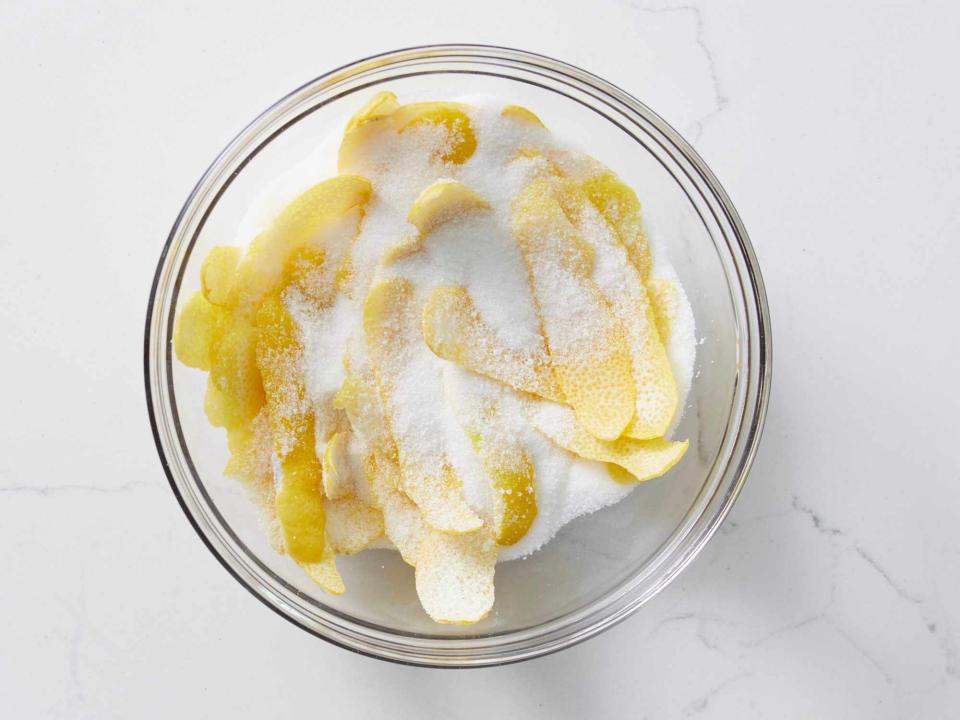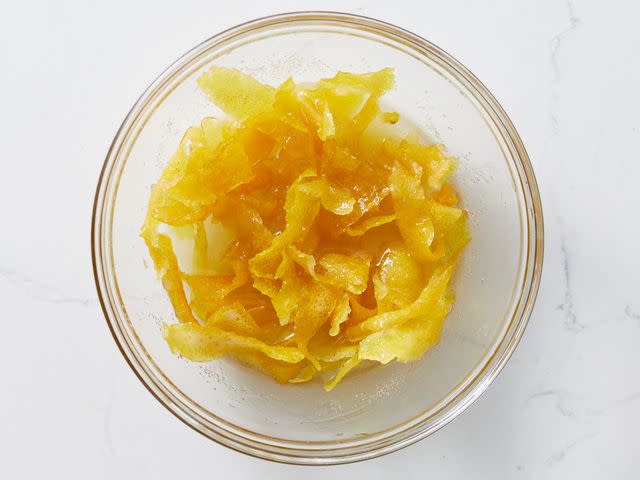What Is Oleo-Saccharum?
It's less complicated than it sounds.

Oleo-Saccahrum sounds like it belongs in a chemistry lab, but it's actually a fairly uncomplicated ingredient. In fact, we bet you already have the ingredients to make it on hand. Perfect for cocktails, lemonade, adding to tea, or for using in baking, this easy-concoction might become your new favorite secret ingredient. It also happens to be a great way to make use of citrus peels you might otherwise discard.
<strong>What Is Oleo-Saccharum?</strong>
It's a homemade lemon oil made from lemon peels mixed with sugar. As the peels sit in the sugar overnight, they secrete natural oils that contain concentrated lemon aromas and flavor. Oleo-saccharum is most often used in cocktails to add citrus notes, but can be used in a variety of recipes.
<strong>Origins of Oleo-Saccharum</strong>
Oleo- saccharum is Latin for oil-sugar (we know, very on the nose) and in the 19th century it was used to flavor punches and alcoholic beverages. It became so popular that a recipe for the homemade oil appeared in the first mixed drinks recipe book called 1827 Oxford Night Caps by Richard Cook.
According to The Oxford Companion to Spirits and Cocktails, oleo-saccharum was made by rubbing citrus against hard blocks of sugar, which used to be packaged in bricks instead of today's convenient bags. As the skin of citrus grated against the hard sugar, the oils would be extracted and some of the sugar would liquify, creating oleo-saccharum, albeit a labor-intensive version. As Victorian era punches fell out of fashion, so did oleo-saccharum, but these days it's having a bit of a renaissance in craft cocktail bars.
<strong>How to Make Oleo-Saccharum</strong>
Use a vegetable peeler to remove large strips of peel from an unwaxed lemon, avoiding the pith (the white part of the lemon between the flesh and skin). Add the lemon peels to a medium bowl or tupperware with a lid (you could also use a Ziplock bag). Combine with sugar (roughly 1½ ounces of sugar per lemon, but it can also be eyeballed) and toss to coat the lemon peels. Seal with a lid and let stand at room temperature for at least 12 hours, although 24 hours is better. Shake the bowl occasionally to redistribute the sugar and draw out more oils. The liquid that pools at the bottom of the peels the next day is the oleo-saccharum.
You could also do this with other citrus, such as limes, grapefruits, and oranges.

<strong>How to Use Oleo-Saccharum</strong>
Use it as you would sugar in a drink or use it in a simple syrup. You can add it to lemonade for extra lemon flavor, use it in an Old Fashioned cocktail, or try it in our Chatham Artillery Punch. It would be a great addition to Sweet Tea or used in baking as part of a flavored cake soak.
<strong>How to Store Oleo-Saccharum</strong>
Store it in an airtight container in the refrigerator for up to a week.
<strong>What You Can Do With the Leftover Peels</strong>
After making oleo-saccharum you will be left with quite a lot of lemon peels, but don't toss them out. You can dehydrate them (either in the oven or in a dehydrator) and use them as an edible cocktail garnish.
For more Southern Living news, make sure to sign up for our newsletter!
Read the original article on Southern Living.

